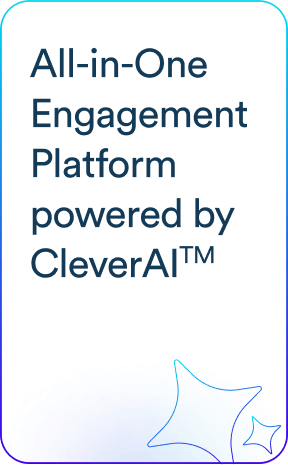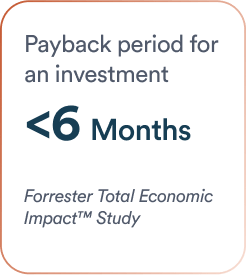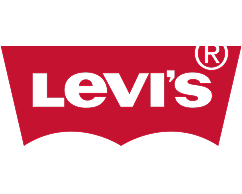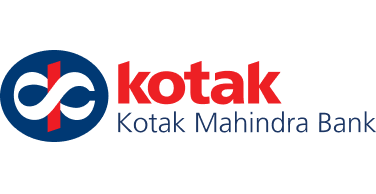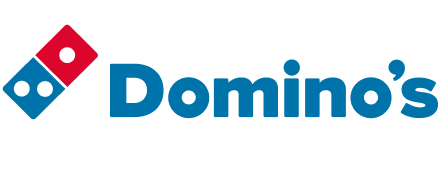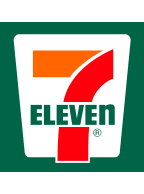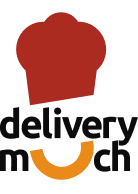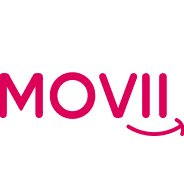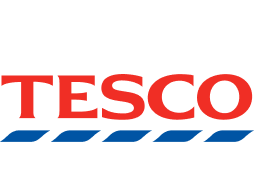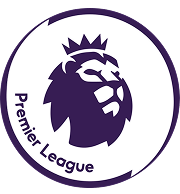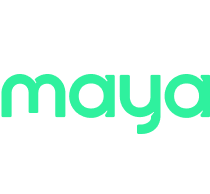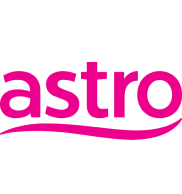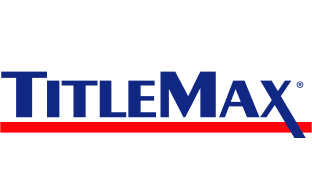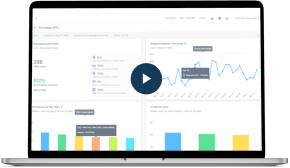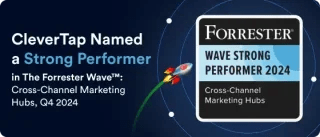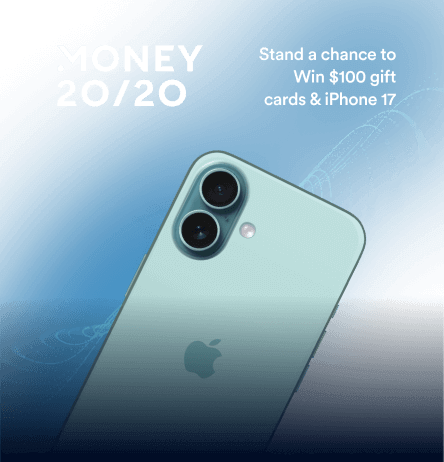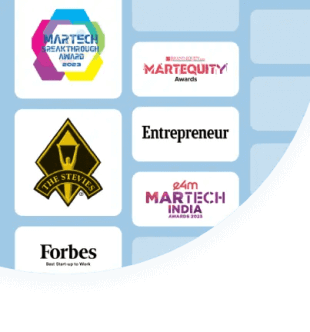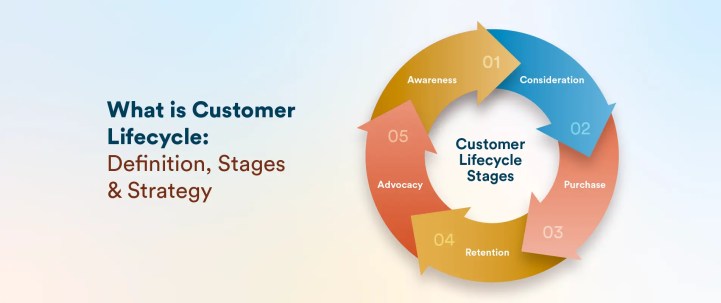Did you know that increasing customer retention by just 5% can boost profits by as much as 95%?* This simple fact underscores why understanding the customer lifecycle and its stages is crucial for any marketer who wants to drive real, sustainable growth.
In this guide, we’ll break down what the customer lifecycle is, how it’s different from the customer journey, and help you apply best practices at each stage with confidence. Let’s dive in.
What Is the Customer Lifecycle?
The customer lifecycle is the progression of steps a customer goes through when considering, purchasing, using, and remaining loyal to a product or service. It serves as a strategic framework to understand and manage the evolving relationship between a business and its customers over time.
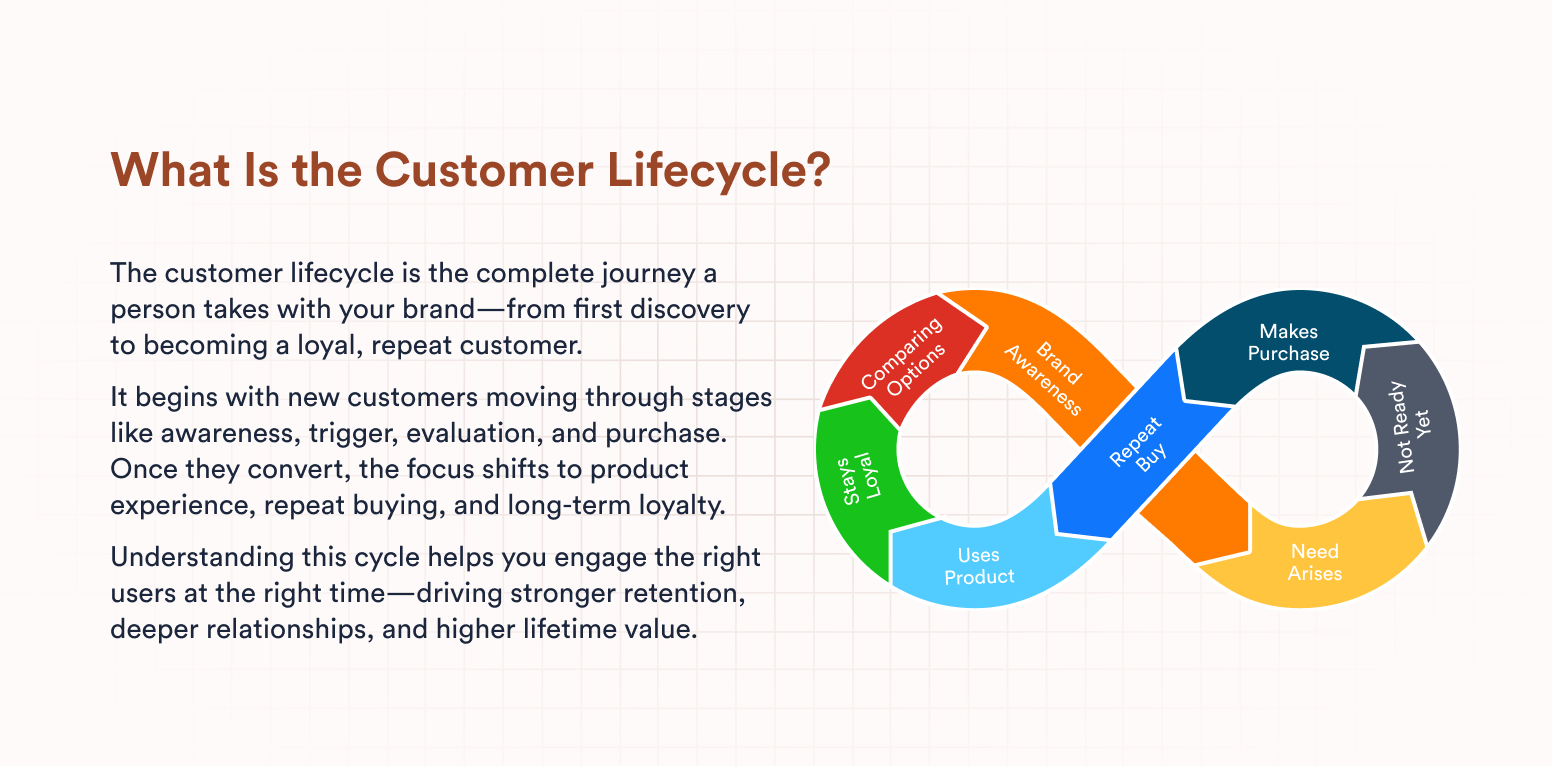
Unlike a simple sales funnel, the customer lifecycle recognizes that relationships are ongoing and dynamic. It’s not just about making a sale, but about consistently guiding customers through key customer lifecycle stages, starting with awareness and ideally leading to repeat customer engagement and advocacy.
Effectively map these stages to identify where to focus your efforts, personalize interactions, and strengthen retention. Actively manage the lifecycle to deliver timely, relevant experiences that boost customer lifetime value and build a foundation for sustainable growth.
The 5 Key Stages of the Customer Lifecycle
Each phase of the customer lifecycle requires a tailored approach to move users forward and maximize their lifetime value. When you break the lifecycle into clear stages, you can create targeted strategies that meet your customers’ specific needs and behaviors at every step.
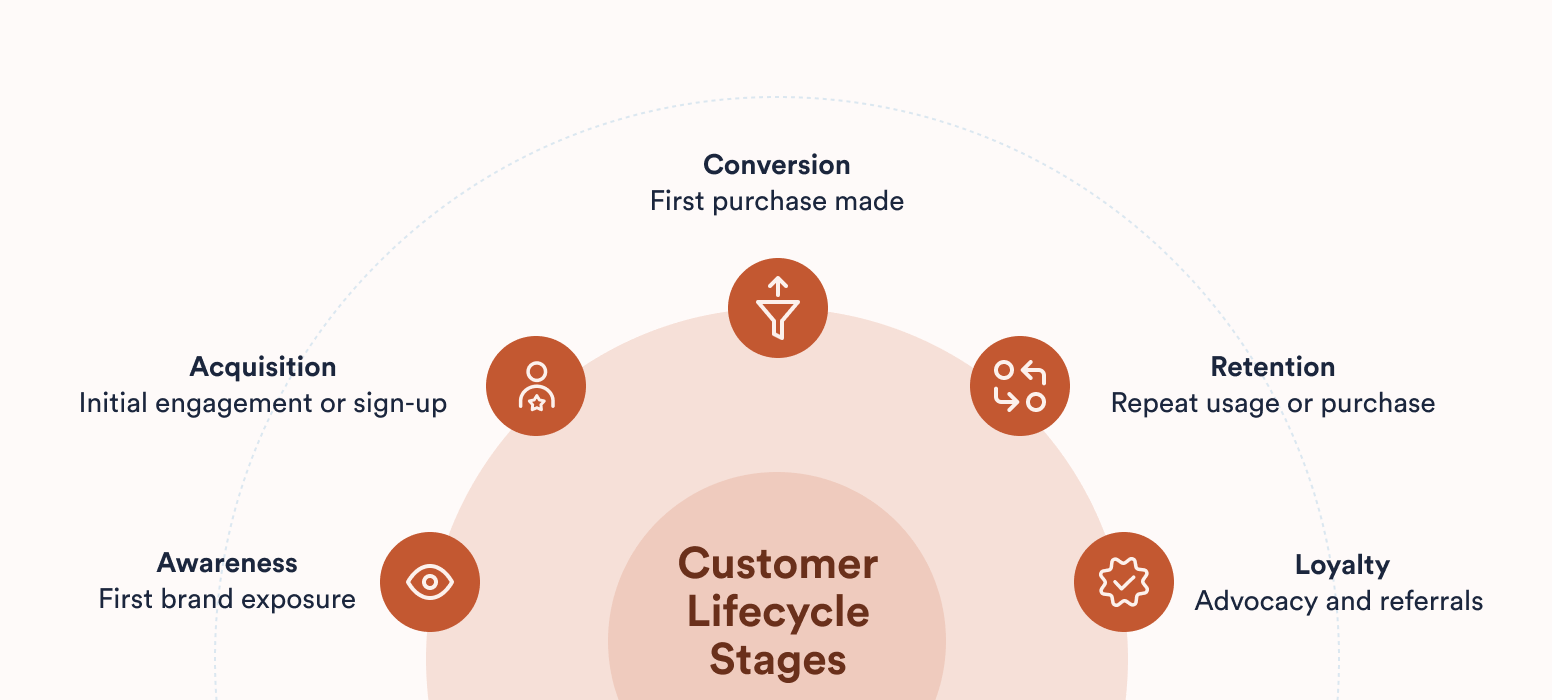
Below, we explore the five key stages of the customer lifecycle and how leading brands excel at each phase:
1. Awareness
The awareness stage is where potential customers first come in contact with your brand. This moment can happen anywhere, through a search engine result, a social media post, a digital ad, or a recommendation from someone they trust.
The goal at this stage is to make your brand visible and memorable, ensuring that when consumers are looking for solutions, your name stands out. Effective lifecycle marketing here means investing in channels and content that put your brand in front of the right audiences at the right time.
Nike exemplifies this approach with its bold digital advertising and influencer campaigns. For instance, their “Winning Isn’t for Everyone” campaign leveraged top athletes and creative social media activations to spark conversations and capture attention worldwide. The campaign consistently showed up where their audience spends time, whether that’s on Instagram, YouTube, or digital billboards. Doing this, Nike ensured it’s always part of the initial consideration set for sportswear and sneakers.
2. Acquisition
Once awareness is established, the next step is acquisition. This is when the potential customers take their first meaningful action with your brand. This could be signing up for a newsletter, downloading your app, creating an account, or starting a free trial. It marks the shift from passive interest to active engagement, and it’s where the groundwork for long-term loyalty begins.
Before customers take that first step, they often go through a period of evaluation, which is often referred to as the consideration stage. The customers are comparing options, reading product reviews, browsing features, and looking for evidence that your solution is the right one. This is where you need to build trust and offer helpful content that guides their decision.
Shopify puts this into practice by sharing real merchant success stories, detailed product comparisons, and informative resources across its website and email touchpoints. It highlights how their platform solves specific business challenges and showcases authentic customer experiences. Shopify gives prospects the confidence and clarity they need to choose their brand over the competition.
Duolingo also shines at the acquisition stage by making the process seamless and engaging. The app lowers the barrier to entry with a frictionless sign-up flow, instant personalization, and gamified onboarding. All of this turns curiosity into commitment within minutes.
3. Conversion
The conversion stage is when a prospect completes their first transaction, turning into a customer. At this critical moment, the focus is on delivering a smooth, frictionless buying experience. This includes easy navigation, multiple secure payment options, transparent pricing, and a quick checkout process.
To reduce cart abandonment and build buyer confidence, minimize barriers like complicated forms, forced account creation, or limited payment methods. Post-purchase communication, such as order confirmation emails and shipping updates, is also vital in reassuring customers and reinforcing their decision.
A strong example comes from Fitbit, which excels at transactional communication. Their order confirmation emails focus solely on essential details like order summary, expected delivery, payment status, and customer support contacts and avoids additional sales pitches. This clarity helps build customer confidence and satisfaction immediately after purchase.
4. Retention
Keeping customers retained goes beyond just sending marketing messages. It’s about providing outstanding service, listening and responding to feedback promptly, and using customer surveys to learn what matters most to your audience.
Personalized offers, loyalty rewards, and helpful free resources like downloadable guides or recipes also play a big role in making customers feel valued and eager to return. Together, these efforts help create a consistently positive experience that keeps people coming back.
A standout example is Tata StarQuik, which used CleverTap’s automated segmentation to re-engage users who had become inactive. By sending targeted win back campaigns, Tata StarQuik saw a 64% rise in repeat purchases, a 20% boost in customer retention rate, and a 30% increase in overall customer lifetime value. This shows the powerful impact of smart, data-driven retention strategies.
“CleverTap helps us in visualizing the user journey at an individual or segment level, enabling us to understand, communicate, and engage with users in a better fashion.”
— Gaurav Juneja, Co-founder, StarQuik
5. Loyalty
Loyalty is the most rewarding and scalable stage of the customer lifecycle. It’s when satisfied customers turn into enthusiastic advocates. Advocacy happens when customers not only continue to buy from you but also actively recommend your brand to others.
Fostering loyalty means continuing to deliver memorable experiences, engaging customers through referral programs, and fostering a sense of community. Positive word of mouth, online reviews, and social sharing can significantly amplify your reach and credibility at minimal cost.
A prime example is Dropbox, which famously accelerated its growth through a referral program that rewarded users with additional storage space for inviting friends. This simple yet effective strategy helped Dropbox expand its user base exponentially by turning loyal customers into powerful brand ambassadors. When you make advocacy easy and rewarding, your happiest customers help fuel your brand’s sustainable growth.
Why Customer Lifecycle Management Is Important for Growth
Managing the customer lifecycle helps you work smarter across marketing, sales, and service. It leads to higher retention, stronger relationships, and better ROI. Here’s how:
Higher Customer Lifetime Value (CLV)
Loyal customers typically spend about 67% more than new ones, which makes making customer lifetime value (CLV) a critical metric to track. Effective lifecycle management also helps reduce the rate at which customers stop doing business with a company by addressing pain points before they lead to lost customers. By focusing on lifecycle stages like retention and loyalty, brands increase average revenue per user. High satisfaction also drives referrals, repeat purchases, and stronger Net Promoter Scores (NPS).
Improved Marketing Strategies
Lifecycle tracking makes marketing more efficient. You can target users with relevant messaging based on where they are in their journey. This leads to lower acquisition costs and higher engagement. Moreover, it helps allocate budget to high-value segments instead of chasing one-time conversions.
Enhanced Sales Processes
Knowing the customer’s journey makes sales conversations more timely and relevant. It shortens decision cycles, aligns messaging to user needs, and boosts conversion rates. Instead of pushing products, sales teams can guide decisions based on context.
Better Customer Service
Lifecycle data highlights where customers struggle. Addressing issues early prevents churn and strengthens satisfaction. Research by Harvard Business School shows that increasing customer retention rates by just 2% can lead to a profit increase of up to 10%. This highlights the powerful impact of keeping customers satisfied.
Overall, lifecycle management optimizes marketing spend by lowering Customer Acquisition Cost (CAC) and increasing the value derived from each customer. This makes it an indispensable strategy for long-term business success.
Customer Lifecycle vs. Customer Journey: What’s the Difference?
Many times, the terms “customer lifecycle” and “customer journey” are used interchangeably. But, they represent two distinct perspectives on how customers interact with your business.
The customer lifecycle is a business-centric model that focuses on how organizations manage and optimize the relationship with a customer from the first moment of awareness through to advocacy. It’s about the strategies and processes you put in place to nurture, retain, and grow your customer base.
In contrast, the customer journey is user-driven. It maps the actual steps, emotions, and decisions a customer experiences as they interact with your brand across various touchpoints. The journey is unique to each customer and reflects their perspective, motivations, and pain points. Here’s a quick overview:
| Aspect | Customer Lifecycle | User Journey |
| Definition | The stages a business designs to manage and grow customer relationships | The path a customer takes, including thoughts and actions |
| Perspective | Organization centric | Customer centric |
| Focus | Business processes, retention, and value maximization | Customer needs, experiences, and emotions |
| Stages | Defined by business (e.g., Awareness, Consideration, Purchase, etc.) | Defined by customer behavior and touchpoints |
| Goal | Optimize lifecycle marketing and customer lifecycle management | Improve user experience and reduce friction |
| Measurement | Metrics like CLV, churn rate, and retention rates | Metrics like CSAT, NPS, and journey mapping |
Lifecycle Management Best Practices
To successfully manage the customer lifecycle and drive growth, focus on these practical, tool-independent strategies:
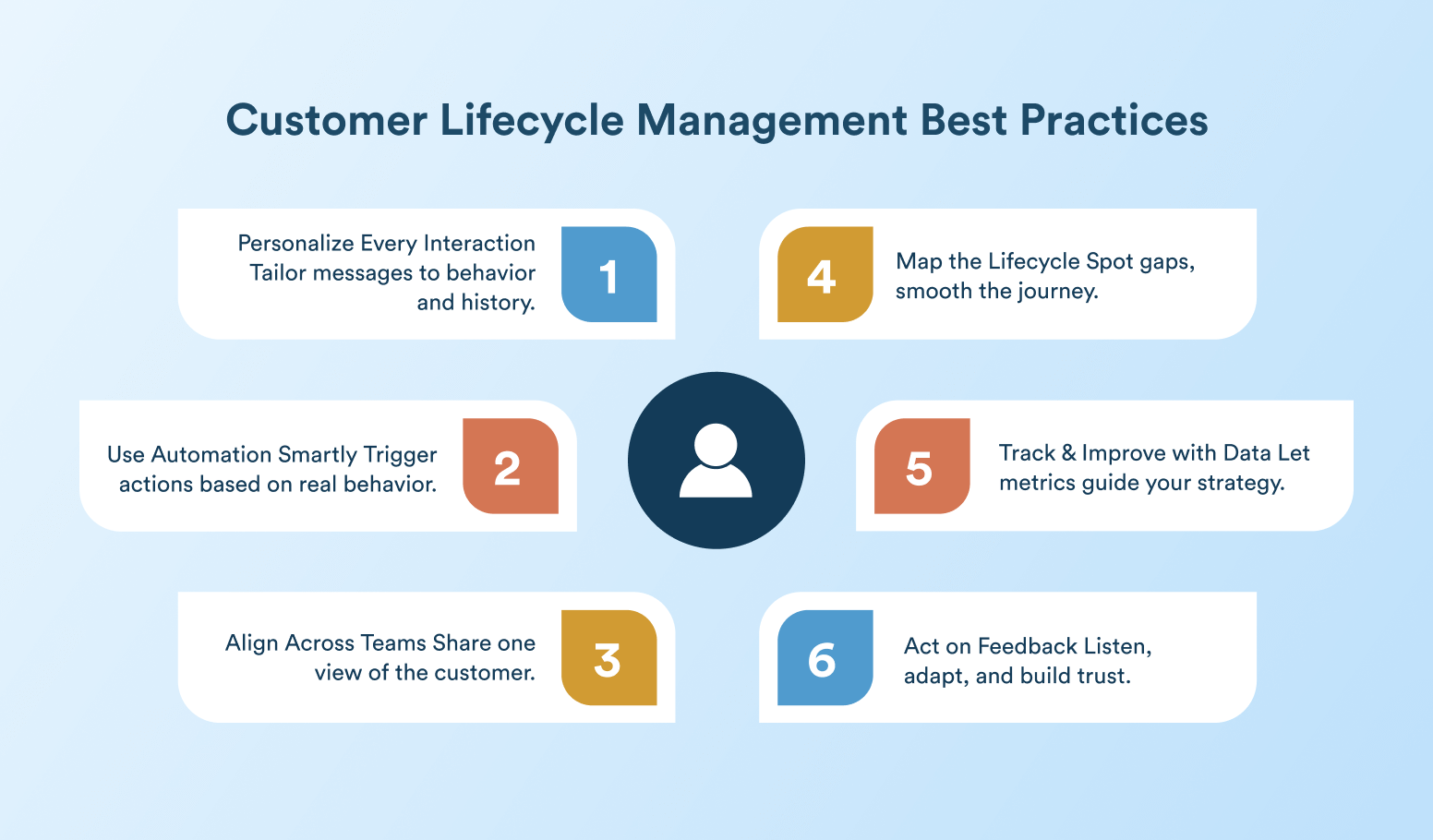
Personalize Every Customer Interaction
Personalization is fundamental to effective lifecycle management. Get to know your customers’ interests, behaviors, and purchase history to craft messages and offers that feel relevant and timely. This tailored approach should continue after the sale, with personalized follow-ups, support, and recommendations that make each customer feel seen and appreciated at every stage.
Leverage Automation Thoughtfully
Automation helps you maintain meaningful engagement as your customer base grows. Set up automated communications, like welcome sequences, reminders for abandoned carts, or reactivation emails, to ensure that your customers receive timely and contextually appropriate messages. When you automate based on real customer actions, you keep every interaction relevant and make it easier to build lasting relationships.
Align Teams Around the Customer Journey
For lifecycle management to succeed, all departments need to work from a shared understanding of the customer experience. When marketing, sales, and support teams work together and share insights, they create smoother, more consistent interactions. This alignment not only improves the customer journey but also helps teams resolve issues faster and deliver a unified brand message.
Map and Optimize the Customer Lifecycle
Clearly outline each phase of your customer’s journey from first discovery to loyal advocacy. This will allow you to spot areas where customers might get stuck or lose interest. Regularly review and refine this journey map, using both data and feedback, to remove obstacles and enhance the experience at every touchpoint.
Track Key Metrics and Use Data to Improve
Keep an eye on important metrics like churn rate, Customer Lifetime Value (CLV), Customer Acquisition Cost (CAC), and Net Promoter Score (NPS). This will give you a clear picture of how well your lifecycle strategies are working. Analyzing these numbers helps you identify trends, adjust your approach, and focus your efforts where they’ll have the biggest impact on retention and growth.
Collect and Act on Customer Feedback
Actively gather feedback, whether through surveys, reviews, or direct conversations, to show your customers that their opinions matter. Using this input to refine your products, services, or communications demonstrates responsiveness and builds trust, which is key for fostering long-term loyalty.
How CleverTap Helps You Optimize the Customer Lifecycle
CleverTap is an all-in-one customer engagement platform that helps brands unlock limitless customer lifetime value. It is designed to help brands engage customers effectively at every stage of their lifecycle. It leverages real-time data, automation, and personalization to enable businesses to deliver relevant experiences that build loyalty and drive growth.
1. Unified Customer View for Intelligent Engagement
CleverTap’s advanced identity management system consolidates data from multiple sources-including apps, websites, and offline channels-into a single, unified customer profile. This comprehensive view allows marketers to understand user behavior and preferences deeply ,and enables smarter, more targeted engagement across all touchpoints.
2. Advanced Segmentation
Beyond basic demographic filters, CleverTap supports rich segmentation options such as behavioral, psychographic, and predictive segmentation, alongside classic RFM (Recency, Frequency, Monetary) analysis. This flexibility helps marketers identify valuable or at-risk customers and tailor campaigns to meet the unique needs of each segment with precision.
3. Hyper-Personalization at Scale with TesseractDB™
Powered by world’s first purpose-built database for customer engagement and retention, TesseractDB™, CleverTap captures and processes vast amounts of behavioral data in real time. This enables brands to deliver personalized messages, offers, and recommendations at scale. It ensures every interaction feels relevant and timely-even with large and diverse user bases.
4. Journey Orchestration Across 15+ Channels with IntelliNODE
CleverTap’s AI-driven journey orchestration engine, IntelliNODE, automates and optimizes customer engagement across more than 15 channels, including push notifications, email, SMS, in-app, and web messaging. It dynamically adapts campaigns based on user actions, guiding customers smoothly from awareness to retention and advocacy with consistent, context-aware messaging.
5. Lifecycle-Centric Use Cases and Automation
With CleverTap, marketers can easily automate campaigns tailored to each lifecycle stage. This includes onboarding new users, re-engaging inactive customers, and encouraging advocacy. Triggered by real-time behaviors or predictive insights, these automated workflows deliver timely, relevant communications that nurture lasting relationships.
6. Real-Time Analytics & Experimentation
CleverTap offers robust analytics tools such as Funnels, Cohorts, Pivots, and Real Impact Dashboards that provide immediate insights into user engagement and campaign effectiveness. Marketers can continuously test and optimize their strategies using built-in experimentation features, ensuring data-driven improvements over time.
7. Advanced Channel-Specific Optimization
To maximize impact, CleverTap enhances each communication channel with specialized features like RenderMax™ for reliable push notification delivery, AMP for Email for dynamic, interactive messages, web messaging for on-site engagement, and Signed Call™ for secure, personalized outreach. These optimizations ensure your messages reach users effectively and resonate deeply.
Optimize every stage of the customer journey with CleverTap.
Final Thoughts: Mastering the Lifecycle for Long-Term Growth
Most teams focus on acquisition. Lifecycle management shifts that focus to what happens after, the stages where profit, retention, and brand preference are actually built. Businesses that prioritize understanding their customers and personalizing interactions create stronger connections that lead to higher engagement and repeat business.
To make this shift measurable and scalable, choose CleverTap to manage the customer lifecycle with clarity and control. Book a demo today!
Shivkumar M 
Head Product Launches, Adoption, & Evangelism.Expert in cross channel marketing strategies & platforms.
Free Customer Engagement Guides
Join our newsletter for actionable tips and proven strategies to grow your business and engage your customers.

